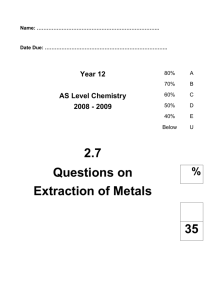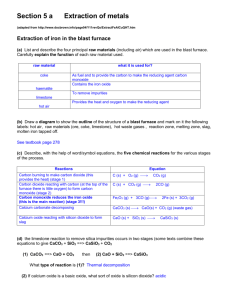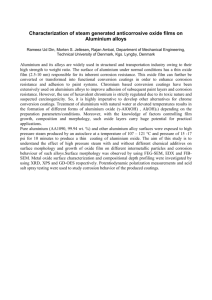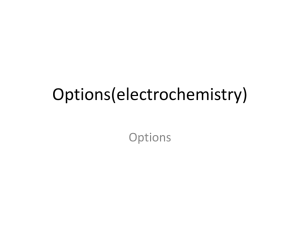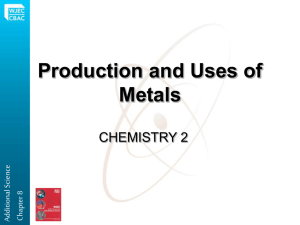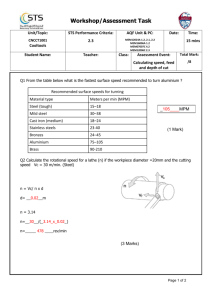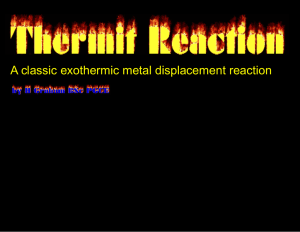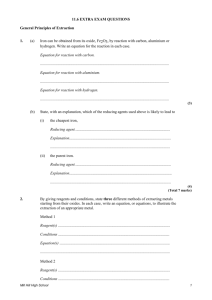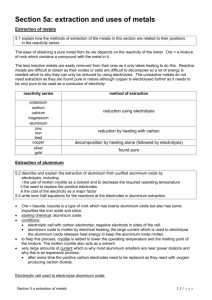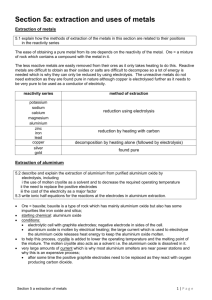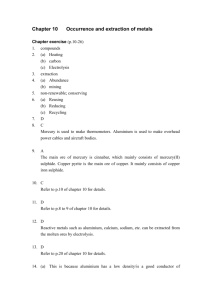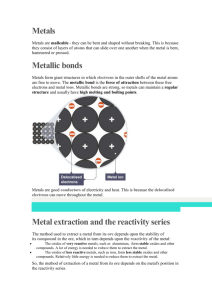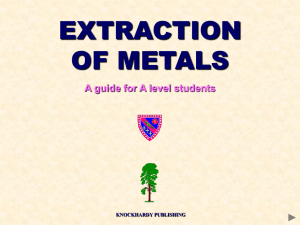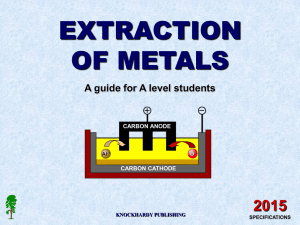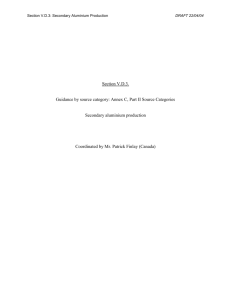Section 5 a Extraction of metals
advertisement
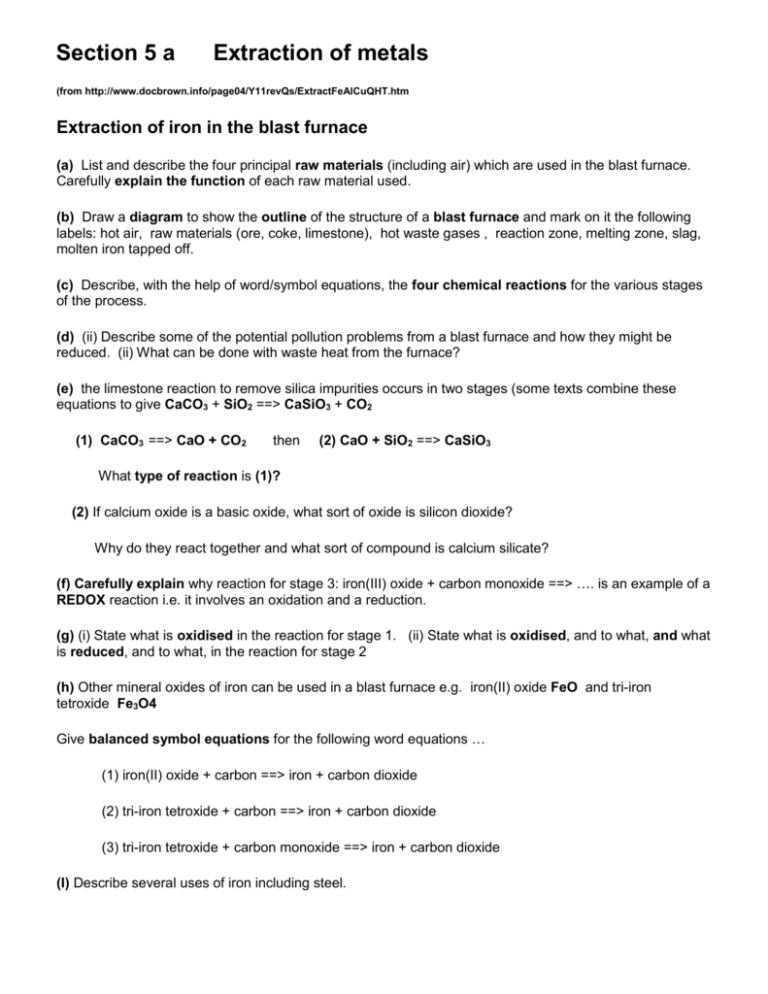
Section 5 a Extraction of metals (from http://www.docbrown.info/page04/Y11revQs/ExtractFeAlCuQHT.htm Extraction of iron in the blast furnace (a) List and describe the four principal raw materials (including air) which are used in the blast furnace. Carefully explain the function of each raw material used. (b) Draw a diagram to show the outline of the structure of a blast furnace and mark on it the following labels: hot air, raw materials (ore, coke, limestone), hot waste gases , reaction zone, melting zone, slag, molten iron tapped off. (c) Describe, with the help of word/symbol equations, the four chemical reactions for the various stages of the process. (d) (ii) Describe some of the potential pollution problems from a blast furnace and how they might be reduced. (ii) What can be done with waste heat from the furnace? (e) the limestone reaction to remove silica impurities occurs in two stages (some texts combine these equations to give CaCO3 + SiO2 ==> CaSiO3 + CO2 (1) CaCO3 ==> CaO + CO2 then (2) CaO + SiO2 ==> CaSiO3 What type of reaction is (1)? (2) If calcium oxide is a basic oxide, what sort of oxide is silicon dioxide? Why do they react together and what sort of compound is calcium silicate? (f) Carefully explain why reaction for stage 3: iron(III) oxide + carbon monoxide ==> …. is an example of a REDOX reaction i.e. it involves an oxidation and a reduction. (g) (i) State what is oxidised in the reaction for stage 1. (ii) State what is oxidised, and to what, and what is reduced, and to what, in the reaction for stage 2 (h) Other mineral oxides of iron can be used in a blast furnace e.g. iron(II) oxide FeO and tri-iron tetroxide Fe3O4 Give balanced symbol equations for the following word equations … (1) iron(II) oxide + carbon ==> iron + carbon dioxide (2) tri-iron tetroxide + carbon ==> iron + carbon dioxide (3) tri-iron tetroxide + carbon monoxide ==> iron + carbon dioxide (I) Describe several uses of iron including steel. Extraction of aluminium (a) What is the main ore of aluminium called? What is the name and formula of the principal aluminium compound in it? (b) Aluminium is extracted from its ore by electrolysis. What does this mean? (c) Sketch in outline the electrolysis cell, add labels to show: bauxite input, carbon anodes (+), electricity supply, aluminium output, carbon cathode (-), waste gases (d) Questions on the electrolysis process: (1) Why is cryolite added to the bauxite ore in the electrolysis cell? (2) Why is it expensive to produce aluminium by this method? (3) Give the names and symbols of the two ions free to move in the molten ore. Where and why do theses ions move to? (4) Give the two electrode equations to show the formation of aluminium at the cathode(-) and oxygen at the anode(+). Explain the changes in terms of oxidation and reduction (5) Why do the carbon anodes have to be replaced regularly? Is there any danger of a toxic gas being produced? (6) Is the electrolysis of molten aluminium oxide an exothermic or endothermic chemical change and explain your answer. (e) The uses of aluminium (1) Describe some everyday uses of aluminium. (2) Give two good reasons for recycling aluminium cans. (3) Why should aluminium not be used for water pipes? [aluminium saucepans are out of favour too!] (4) Give three good reasons for using aluminium alloys for aircraft wings. (5) Aluminium is used for window frames but theoretically it is reactive enough to corrode away fairly rapidly. Explain why this does not happen.
